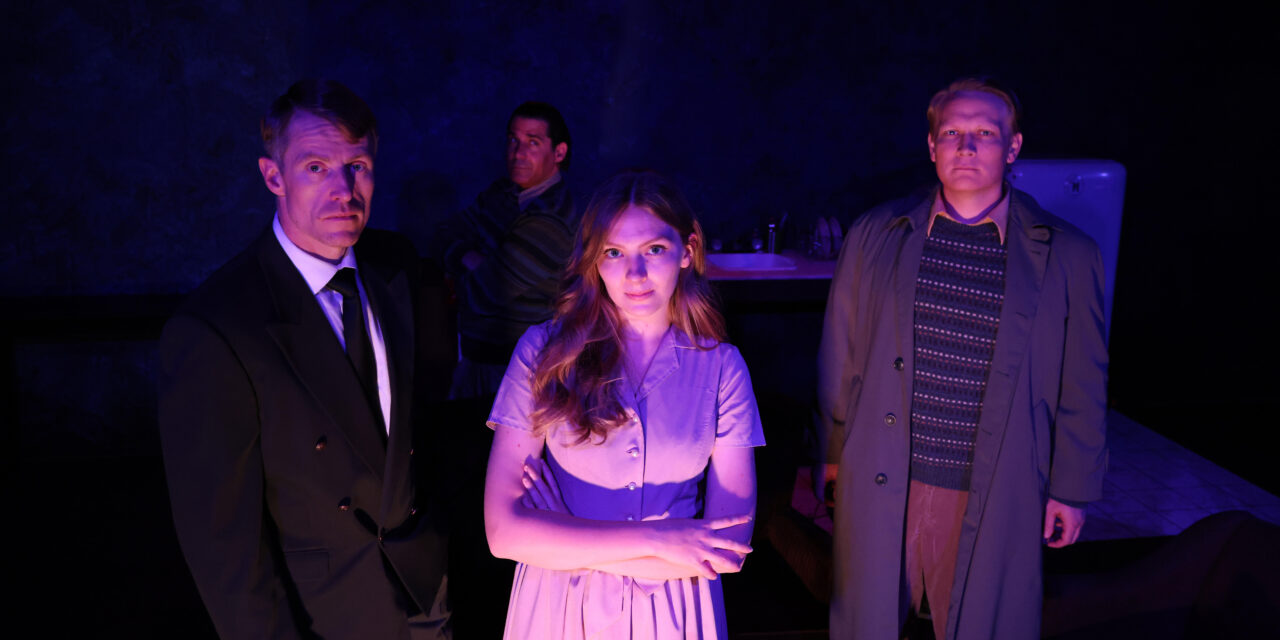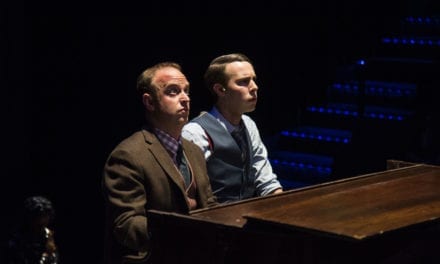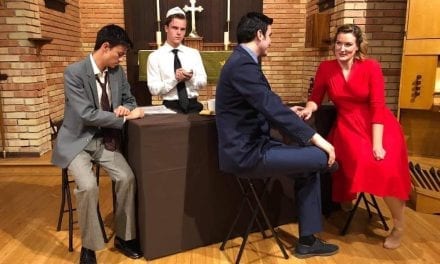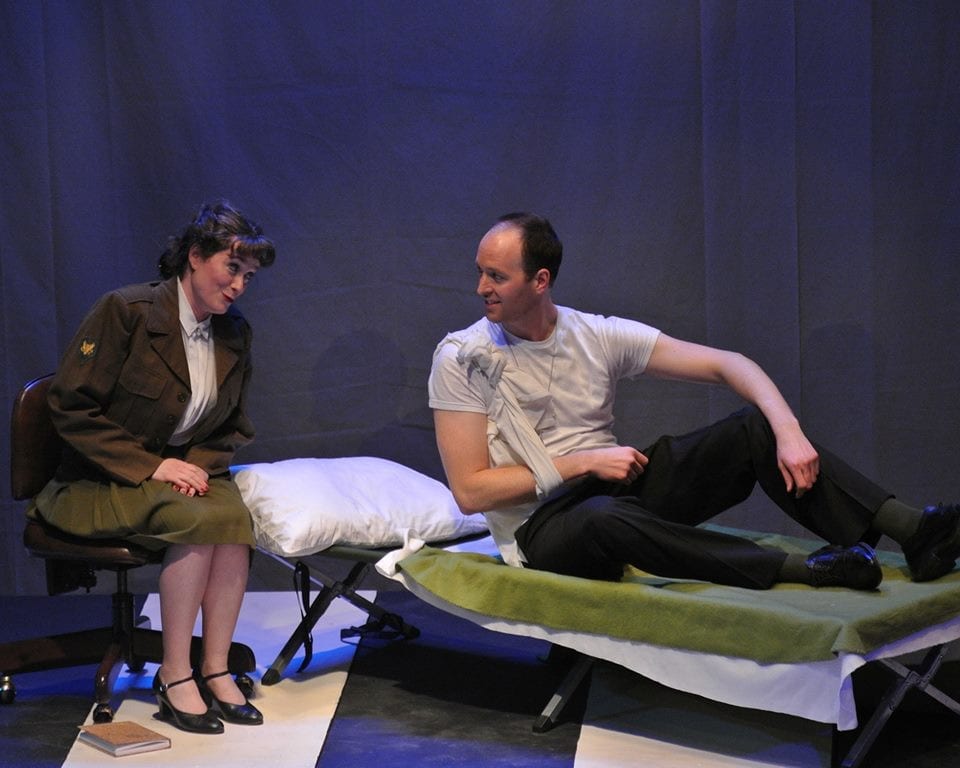PROVO — There are times when a classic play meets a perfect venue for that material. Whether it be an amphitheater to a black box sometimes knowing what to select for the space is half the battle of the piece succeeding or not. This is why the folks at Covey Center for the Arts in Provo were so brilliant in selecting the beloved thriller Wait Until Dark for their Brinton Black Box Theater. It’s a case of an ideal venue for a superbly written play with a wonderful cast making for a memorable night of theater.
In so many ways putting on Wait Until Dark in a black box just makes sense. For the story to work it’s essential the directors get the environment to be as dark as possible. It literally is a key plot point that things are very, very dark. What better place to do so than in a black box?
Readers may know Wait Until Dark from the 1967 classic film starring Audrey Hepburn and Alan Arkin. The film is adapted from the Broadway play that had actually debuted just the year before in 1966. It is written by Frederick Knott and and it might sound like hyperbole but it is truly a flawlessly crafted thriller. The story centers on Susan Hendrix, a blind woman who has strange visitors come to call one evening when her husband is out. He had inadvertently picked up a doll at the airport with some contraband inside that the men will stop at nothing to get.
The team at the Covey then took this iconic material and applied it to their black box theater. Director Barta Heiner, technical director Robert Seeley and their team of set designers have created a believable 1940s apartment with false window (essential to the plot) with a believable backlighting to feel like an actual window. The walls have wallpaper and wainscoting that looks authentic with period appropriate photos (Susan’s husband is a photographer so it’s important to have them prominently displayed) and there is a period-accurate fridge that plays a key role as well. No detail was too small for this team. For example, there are 2 doors in the back of the set. One is to a closet the other is to a hallway and the hallway door they made sure to wallpaper the wall inside even though it is barely seen as people come in and out of that entrance.
All of the performances are excellent at the Covey with Eden Bostrom leading things as Susan. Bostrom is believable as the “world champion of blind ladies”. The great challenge comes in playing not only a blind woman but a newly blind woman. There is a vulnerability and lack of confidence to her performance that makes her peril convincing throughout the play. Bostrom also takes care as she moves through the aisles of the black box to stop any time there is a step and to never break character. Susan is such a likable character that is easy to empathize with her and Bostrom leans into those attributes giving some spunk and energy to her responses along with the vulnerability and genuine fear, which makes the entire experience gripping and exciting.
The rest of the cast is terrific. Timothy Dillard makes for a creepy and theatrical Roat and Keanan Cantrell is appropriately charming and slick as Mike Talman.
One of the big hallmarks of Wait Until Dark is, as you might guess, the darkness. This is why picking this show a black box was so useful. I have, however, been to other productions where they even blacked out the exit signs of the theater. In those instances, companies announced ahead of time they would be doing this for any safety concerns. Given their luminous glow, it might have been nice if they could have done that at Covey but it was still very dark.
Wait Until Dark is known amongst thriller fans for having one of the most effective surprise or jump scares in theatre history. However, at the Covey the black box space is small enough and the entrances to the space are situated in a way that a surprise is really not possible. This forced Heiner to stage things as more of an outright attack than I have seen before with some of it happening off stage. One can even hear shouting coming from the hallway and off-stage bedroom. The effect was much more violent because the audience is left to imagine what might be happening to Susan rather than seeing it play out. It was neat to see a new staging of such a memorable scene.
Knott keeps the pacing on the slow side in the script for the first act with the exposition establishing each character and their motivations and all the little details that will bear fruits in the finale. If audience members aren’t drawn in during that first act I’d encourage them to be patient and let the play and the folks at the Covey work their magic. I know I certainly left with a smile on my face having been thoroughly entertained by one of the great American plays well told by a talented cast and crew.

This review was generously sponsored by a grant from the Provo City Recreation, Arts, and Park (RAP) grant.





